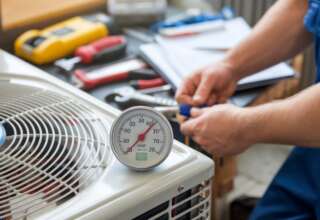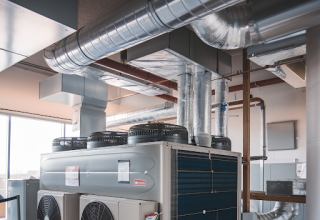Knowing how a refrigerator works could seem a bit obsolete and unnecessary for an experienced heating and air conditioning contractor dealing in different types of complicated systems. However, the basics are the basics, and they are essential. This means that having detailed and in-depth knowledge of how a household refrigerator operates will help you gain a deeper understanding of the inner workings of more intricate HVAC solutions.
And not only that, but it will give your contracting company another dimension of expertise during the slow heating and air conditioning seasons. That’s why it’s important to get curious and see how a household fridge actually operates. Besides giving you an additional service to offer to your customers, some of the components are identical to those in large residential and commercial heating and air conditioning systems. And that’s vital to your main business.
What Are The Main Components Of A Refrigerator?
Refrigerators are household and industrial appliances designed to keep food and various other items fresh and free from a variety of potentially harmful bacteria. Refrigerators transfer heat from within them to the outside area.
That’s why a refrigerator often feels warm when your clients touch the backside of their refrigerator. That’s where the condenser pipes are located and that’s their main area of operations. But we’re getting ahead of ourselves. Let’s explore the main components of refrigerators first and see what it is they do within the entire system.
Compressor
This is the main component of any refrigerator. Its essential function is circulating the refrigerant through the entire system and adding sufficient pressure in the warm portion of the system, making the refrigerant hot. The operation of the compressor is similar to the operation of the bicycle tube air pump – as you use it and keep compressing the air, heat increases.
Condenser
Condenser tubes are located at the back exterior part of the refrigerator and are probably dusty if your clients have been using their appliance for some time. The refrigerant gets condensed and cooled in these tubes and it turns from its gaseous state back to its liquid state for recirculation within the system.
Evaporator
Evaporator tubes are situated inside of the refrigerator and they’re the actual component that cools the items within the refrigerator. The process of evaporation transformers the refrigerant into its gaseous state. As this happens, it cools all the areas that surround it, ensuring a constant temperature within the refrigerator.
Capillary Tube
This is a piece of usually copper tubing that functions as one expansion device. The refrigerant in its liquid state passes through the capillary tube and gets sprayed into the evaporator. The environment within the evaporator tubes is a low-pressure environment, allowing for the transformation of states.
Thermostat
Thermostats actually control the entire process that transpires within the refrigerator. It monitors the temperature, turning the compressor off and on depending on the current environment within the refrigerator.
How Does A Refrigerator Work?
The main operation cycle of the refrigerator is the changing of the refrigerant state from a liquid into a gas state. This process is evaporation and as it happens it provides cooling within the refrigerator. This is the process through which a refrigerator operates:
- The capillary tube reduces the pressure on the existing refrigerant.
- As the refrigerant is released from the capillary tube, it transforms into gas.
- Then, the compressor increases the refrigerant pressure to turn it back into its liquid state and recirculate within the system.
- The condenser cools down the heated refrigerant from the compressor.
- As the refrigerant cools down, it transforms into liquid and goes back into the capillary tube to begin the process again.
Read More: A Guide To Cold Storage And Refrigerated Warehousing
https://www.google.com/maps/place/Gustave+A+Larson+Company/@43.0731161,-88.2161992,17z/data=!3m1!4b1!4m5!3m4!1s0x8805a9708f11ab53:0xa02aec852e964bda!8m2!3d43.0731161!4d-88.2140105











